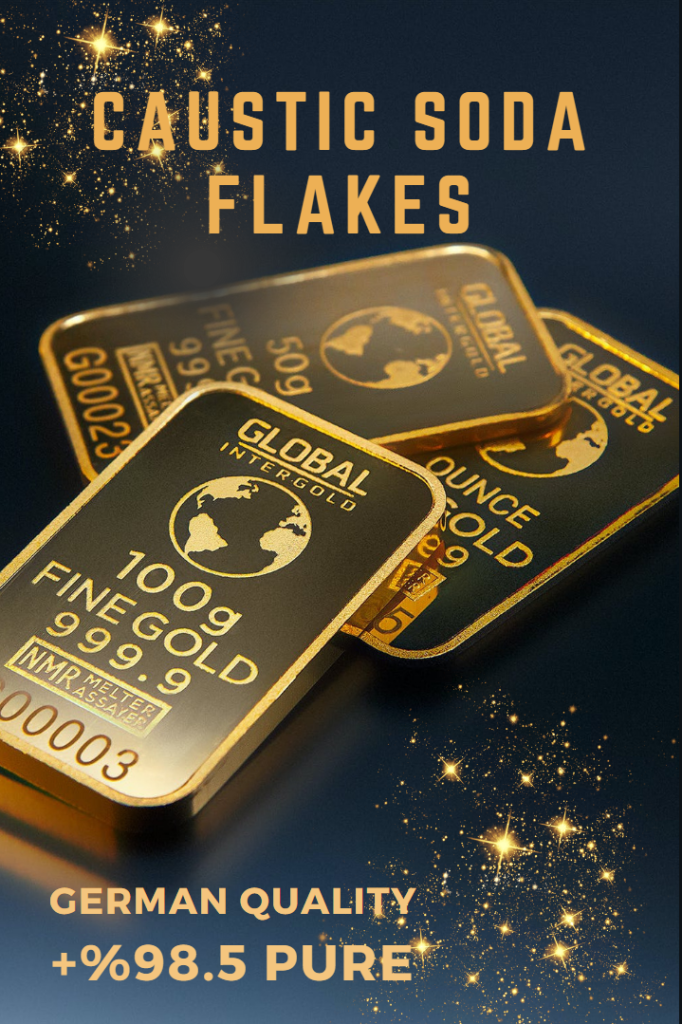I. Introduction to caustic soda and its properties
Understanding how caustic soda aids in descaling and degreasing metal surfaces is crucial for industries that rely on the efficient and effective cleaning of their equipment and machinery. Caustic soda, also known as sodium hydroxide (NaOH), is a highly versatile chemical compound that plays a significant role in various industrial applications. In the context of descaling and degreasing, caustic soda offers powerful properties that dissolve scale and remove grease from metal surfaces, restoring their functionality and prolonging their lifespan. This article will delve into the mechanisms behind caustic soda’s effectiveness as a descaler and degreaser, discuss the factors influencing its performance, highlight safety precautions, provide a step-by-step process, explore alternative methods, and ultimately assess its benefits and limitations in metal surface cleaning.
I. Introduction to caustic soda and its properties
1. What is caustic soda?
Caustic soda, scientifically known as sodium hydroxide (NaOH), is a powerful alkaline chemical compound widely used in various industrial applications. It is a white solid that dissolves easily in water, forming a highly corrosive solution.
2. Chemical properties of caustic soda
Caustic soda is known for its strong alkaline properties, making it an excellent cleaning agent. It is highly reactive and can react exothermically with various substances, including acids and certain metals. Moreover, it is hygroscopic, meaning it readily absorbs moisture from the surrounding air.
II. The importance of descaling and degreasing metal surfaces
1. Effects of scale and grease on metal surfaces
Over time, metal surfaces accumulate scale and grease, which can negatively impact their performance and durability. Scale refers to mineral deposits that form as a result of exposure to hard water or high-temperature environments. Grease, on the other hand, is a mixture of oils, fats, and other substances that can adhere to metal surfaces. Both scale and grease can hinder heat transfer, impede machinery operation, and promote corrosion.
2. Benefits of descaling and degreasing
Descaling and degreasing metal surfaces offer numerous advantages. By removing scale and grease, the efficiency and lifespan of machinery and equipment can be greatly enhanced. Cleaning metal surfaces also improves heat transfer, preventing overheating and reducing energy consumption. Furthermore, it helps to maintain the appearance and hygiene of metal surfaces, making them easier to maintain and preventing the growth of bacteria and other contaminants.
Related Post: UNDERSTANDING THE APPLICATIONS OF CAUSTIC SODA IN METALLURGICAL PROCESSES FOR METAL EXTRACTION
III. How caustic soda works as a descaler and degreaser
1. Chemical reactions involved
When caustic soda comes into contact with scale or grease, it initiates chemical reactions that break down these unwanted substances. It hydrolyzes fats and oils through a process called saponification, converting them into soap-like substances that can be easily washed away. Additionally, caustic soda reacts with the minerals in scale, dissolving them and facilitating their removal.
2. Role of caustic soda in breaking down scale and grease
Caustic soda’s alkaline nature enables it to disrupt the bonds between scale and metal surfaces, loosening and dislodging the deposits. Moreover, its strong corrosive properties help dissolve grease and remove it from metal surfaces. By effectively breaking down scale and grease, caustic soda allows for thorough cleaning and restoration of metal surfaces.
IV. Factors influencing the effectiveness of caustic soda in descaling and degreasing
1. Concentration of caustic soda
The concentration of caustic soda used in the cleaning solution greatly affects its effectiveness. Higher concentrations typically provide faster and more efficient descaling and degreasing. However, caution must be exercised as excessively high concentrations can damage sensitive surfaces or require additional safety precautions.
2. Temperature and duration of exposure
Caustic soda’s effectiveness increases with higher temperatures. The heat accelerates the chemical reactions, allowing for quicker breakdown and removal of scale and grease. Longer exposure times also enhance the cleaning process, as more time allows for deeper penetration into the deposits.
3. Type and thickness of scale or grease
The type and thickness of the scale or grease present on metal surfaces influence the efficacy of caustic soda. Some deposits may require more aggressive cleaning methods or specialized formulations to ensure effective removal. Additionally, the thickness of the buildup can impact the time and effort required for complete cleaning.
Understanding how caustic soda aids in descaling and degreasing metal surfaces is crucial for maintaining the performance and longevity of machinery and equipment. By utilizing this powerful cleaning agent and considering the factors that influence its effectiveness, you can keep your metal surfaces clean, functional, and free from unwanted deposits.
Related Post: THE VERSATILITY OF CAUSTIC SODA: APPLICATIONS ACROSS INDUSTRIES
V. Safety precautions and handling of caustic soda during descaling and degreasing
1. Importance of personal protective equipment (PPE)
When it comes to working with caustic soda, safety should be your top priority. It’s like going to battle with a grumpy dragon – you need armor! And by armor, I mean personal protective equipment (PPE).
Before you start using caustic soda for descaling and degreasing metal surfaces, make sure you have on your “safety superhero” gear. This includes wearing gloves that can withstand the corrosive power of caustic soda, goggles or a face shield to protect your pretty peepers, and a lab coat or protective clothing to keep your outfit as stylish as ever while staying safe.
2. Proper storage and handling of caustic soda
Remember that caustic soda is not a friendly pet that you can leave lying around the house. It requires special storage and handling. Think of it as a houseplant – it needs the right conditions to thrive, but unlike a houseplant, it can burn your skin off.
Store caustic soda in a secure and labeled container, away from heat and moisture. Keep it out of reach of children, pets, and those pranksters who think it’s funny to mess with dangerous chemicals. Oh, and avoid storing it beside your chocolate stash – trust me, they don’t mix well.
When handling caustic soda, be careful not to spill it and create a Slip ‘n Slide of danger. Use appropriate tools, like scoops or tongs, to measure and transfer the caustic soda. And please, don’t be tempted to taste it or use it as a secret ingredient in your cooking experiments. Stick to food-grade ingredients for that cake you’re baking.
3. First aid measures
Accidents happen, and sometimes caustic soda may win the battle. If you find yourself in a sticky situation with caustic soda, here are some first aid measures to keep in mind:
– If caustic soda comes into contact with your skin, rinse the affected area immediately with plenty of cold water for at least 15 minutes. Ignore the urge to turn into your own version of a human sprinkler – just focus on the affected area.
– For eye contact, flush your eyes with water for at least 15 minutes and seek medical attention, even if you think you’re the next contestant on “So You Think You Can Cry.”
– In case of ingestion, do not induce vomiting (don’t worry, you won’t be starring in a gross-out movie). Instead, drink a glass of water if you can swallow safely and seek immediate medical attention.
Remember, it’s better to be safe than sorry. If you’re not sure about anything or if you’re experiencing any discomfort, contact a medical professional. They’re the real heroes when it comes to saving the day.
VI. Step-by-step process of using caustic soda for descaling and degreasing metal surfaces
1. Preparing the caustic soda solution
Before you unleash the power of caustic soda on your metal surfaces, it needs a little prep work. Mix caustic soda with water (always add caustic soda to water, not the other way around – we don’t want any explosive surprises). Follow the recommended ratio provided by the manufacturer, or consult your trusty chemistry teacher if you’ve kept in touch.
2. Applying the solution on the metal surface
Once you have your caustic soda solution ready, it’s time to get down to business. Apply the solution to the metal surface using a brush, sponge, or any other method you find convenient. Just remember to wear your superhero gloves to protect your delicate hands from the caustic soda’s evil intentions.
3. Cleaning and rinsing the metal surface
After you’ve let the caustic soda work its magic for a suitable period of time (check the instructions, they’re not just there for decoration), it’s time to clean and rinse the metal surface. Grab a cloth or sponge, dip it in water, and wipe away the residue. Make sure you remove all traces of caustic soda, because we don’t want any surprise chemistry experiments happening later.
VII. Alternative methods and chemicals for descaling and degreasing
1. Mechanical methods
If you’re not into the whole “chemical warfare” thing, don’t worry, there are alternative methods for descaling and degreasing metal surfaces. Mechanical methods, like scrubbing with abrasive pads or using high-pressure water jets, can be effective at removing stubborn grime. Just be prepared to break a sweat and channel your inner superhero strength.
2. Acid-based descaling agents
Acid-based descaling agents can also be used to tackle tough scale and grease. Just remember to take safety precautions, as they can be as potent as a chili pepper in your eye. Always follow the manufacturer’s instructions and wear appropriate protective gear. Also, keep in mind that some metals may not play well with acids, so check for compatibility before you start your acid party.
3. Solvent-based degreasers
Solvent-based degreasers are another option for combating grease. These powerful solutions can melt away oily residue quicker than an Olympic sprinter. However, they may have their own safety considerations, so make sure to use them in a well-ventilated area and avoid lighting a match nearby (unless you have a secret ambition to be a human firework).
VIII. Conclusion: The benefits and limitations of using caustic soda in metal surface descaling and degreasing
Caustic soda is like a trusty sidekick in the battle against scale and grease on metal surfaces. It has the power to dissolve those stubborn enemies and leave your metal shining like a knight’s armor. But like any superhero, it has its limitations.
One of the major benefits of using caustic soda is its effectiveness in removing heavy deposits and stubborn grime. It’s like a superhero with super strength – it can break down even the toughest foes. Additionally, caustic soda is relatively inexpensive and readily available, making it a popular choice for many DIY warriors.
However, caustic soda does have its downsides. It can be corrosive, so caution is necessary when handling and using it. It’s also important to consider its environmental impact, as improper disposal or excessive use can harm aquatic life and make Mother Earth cry. Lastly, caustic soda may not be suitable for all types of metals, so be sure to check for compatibility before going all in.
In the end, choosing the right descaling and degreasing method depends on your specific needs and preferences. Whether you go for the caustic soda superhero or explore alternative methods, remember to prioritize safety and have fun saving your metal surfaces from the clutches of scale and grease. Go forth, fearless warriors, and may your metal surfaces gleam like the sun on a summer’s day!
VIII. Conclusion: The benefits and limitations of using caustic soda in metal surface descaling and degreasing
In conclusion, caustic soda is a highly effective tool for descaling and degreasing metal surfaces in various industries. Its chemical properties allow it to break down scale and dissolve grease, restoring the cleanliness and functionality of equipment and machinery. However, it is important to exercise caution and follow safety protocols when handling caustic soda due to its corrosive nature. Additionally, alternative methods and chemicals may be considered depending on specific cleaning requirements. Understanding the benefits and limitations of caustic soda as a descaler and degreaser empowers industries to make informed decisions for maintaining their metal surfaces and optimizing their operations.











